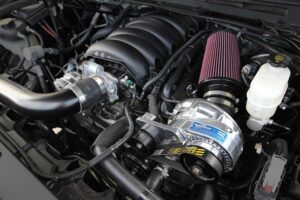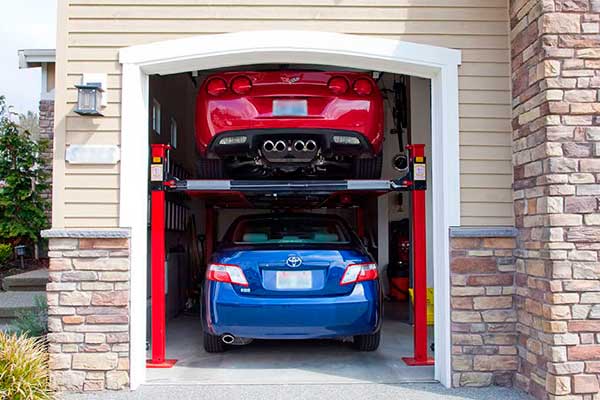The main difference between a supercharger and a procharger is the way they deliver power to your vehicle. The supercharger compresses the air and forces it into your engine while the impeller in a procharger acts on air that is already in the engine.
 Superchargers rely on positive pressure to provide power while prochargers rely on negative pressure. Superchargers are not as powerful as prochargers, but they’re also less expensive to purchase.
Superchargers rely on positive pressure to provide power while prochargers rely on negative pressure. Superchargers are not as powerful as prochargers, but they’re also less expensive to purchase.
The procharger and the supercharger are both devices that increase performance in your car. They each do this by increasing the oxygen going into the engine which causes more fuel to be burned. The differences between these two mechanisms lie in how they deliver extra power to the engine.
In this guide, we will compare and contrast procharger vs supercharger and help you decide which is right for you.
What is a Supercharger?
A supercharger is an air compressor that forces extra air into the engine. The power comes from a pulley that is driven by the engine itself or an electric motor that rotates the compressor. The increased air causes more fuel to be burned and produces more power for your vehicle.
In most cases, a supercharger can deliver about 10-15 pounds of boost, measured in PSI (pounds per square inch). A supercharger is usually belt-driven, so there’s virtually no installation time.
Roots Supercharger
A Roots supercharger is a type of supercharger that uses two helical rotors to compress the air. It was invented by Philander and Francis Roots in 1860. The design was originally used to pump air into large stationary engines.
The Roots supercharger is the most common type of supercharger and is found in many different types of vehicles. It is easy to install and relatively affordable. It delivers a moderate amount of boost, about 10-15 PSI.
Twin-Screw Supercharger
A twin-screw supercharger is a type of supercharger that uses two screws to compress the air. It was invented by Maurice H. Vaultier in 1931. The design is more efficient than the Roots supercharger and can deliver more power with less boost.
Twin-screw superchargers are more expensive than Roots superchargers, but they are more efficient and can provide more power. They are found in many different types of vehicles.
Supercharger Pros
There are several benefits to having a supercharger in your vehicle. The main advantage of this device is its simplicity. It can be installed in less than an hour and requires little additional maintenance after the initial installation. A supercharger can be removed because it does not modify any of the internal components of your engine.
This device also enhances many features that are already present in your vehicle. For example, most superchargers come with an overdrive pulley which improves your car’s fuel economy and throttle response. A supercharger produces more power than other types of performance-enhancing systems, but it doesn’t produce as much power as engines that are modified.
Supercharger Cons
Despite the benefits of owning a supercharger, there are some cons associated with this device. While they don’t have many installation requirements, superchargers do require you to replace your air filters more often. A supercharger can also cause your vehicle to run hot during the summer months, which means you’ll need to purchase an aftermarket cooling system for your car.
What is a Procharger?
A procharger is an air compressor that takes the air that is drawn into your engine and forces more air into it with a motor-driven impeller. This causes more fuel to be burned which creates additional power for your vehicle.
The power comes from an electric or belt-driven motor, so there’s little installation time.
The design of this device is unique in that it uses an aftercooler. This increases the density of the air inside your engine. The increased power creates more heat, which means you’ll need to install a cooling system for your car if you own one.
Procharger Pros
A procharger is easy to install and does not require any modifications to your vehicle’s internal components. There are also several other benefits that should be noted, such as the increase in throttle response and fuel economy.
The driving range of your car is also improved because there is less resistance against the pistons due to an increased number of oxygen molecules inside the cylinders. This device produces more power than other types of aftermarket performance enhancers, but it isn’t as powerful as engine modifications.
Procharger Cons
There are some disadvantages associated with having a procharger in your vehicle, such as excessive heat production during the summer months. These devices come equipped with an intercooler that cools the air before it is injected into your engine. Although this makes the air cooler, it also creates more resistance against your pistons, which reduces the power of your vehicle.
Another drawback to owning a procharger is that it can be pricey. You should expect to pay between $900 and $2,000 for one of these devices since there are many additional components that come with an installation.
FAQs about superchargers and prochargers
1. Which is better for your car – a supercharger or a procharger?
Neither superchargers nor prochargers are inherently better than the other. What matters is what you need out of your vehicle and what you can afford. If you want to increase the power in your car by a significant amount, for less money, then a supercharger might be right for you. On the other hand, if you have the cash to spend on a performance-enhancing device, then you might want to invest in a procharger.
2. What are the costs associated with installing a supercharger or procharger on your car?
The average price of modifying your vehicle with a procharger or supercharger is roughly $1,000. There are additional costs if you need to purchase an aftermarket cooling system for the summer months, but many individuals can get away without buying one.
3. How much do they increase my car’s performance?
A supercharger increases your car’s power by approximately 25 percent. Prochargers typically increase the power by 50 percent, although the exact amount of horsepower produced varies from vehicle to vehicle.
4. How long will it take to install a supercharger or procharger on my car?
A typical installation time for these devices is about eight hours. You’ll need to have at least some knowledge of how cars work or hire an auto mechanic to help you with the installation.
5. Are they safe for my engine?
Yes, but there are some risks involved when using either device. If installed incorrectly, these devices can cause your car to overheat or even catch on fire. They can also pose safety problems on the road.
6. What are some of the possible drawbacks to using one of these devices?
Superchargers and prochargers can cause your engine to make more noise, especially if you’re driving at high speeds. If you own a supercharger, then it’s important for you to install an intercooler; otherwise, your vehicle will become too hot and may even catch on fire.
7. Do I need to install an aftermarket cooling system when using a supercharger or procharger?
Yes, you should most definitely invest in one of these systems. If you don’t have the money to spend on an additional device, then it might be best for you to opt for a supercharger.
Conclusion
As you can see from reading the comparison above, both superchargers and prochargers provide additional power to your vehicle. This makes it difficult for many individuals to choose which device is best suited for them.
It’s all about what kind of performance increase you want.
If you have the cash to spend, then invest in a procharger. Prochargers are more expensive than superchargers, but they can provide your car with a greater increase in horsepower.
On the other hand, if money is an issue for you and you’re not too serious about performance enhancement, then perhaps a supercharger is the best option.


